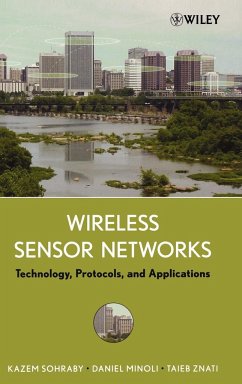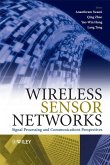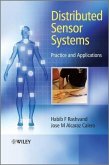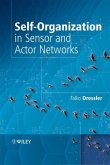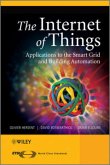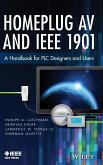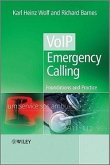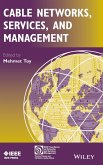Preface xi
About the Authors xiii
1 Introduction and Overview of Wireless Sensor Networks 1
1.1 Introduction, 1
1.1.1 Background of Sensor Network Technology, 2
1.1.2 Applications of Sensor Networks, 10
1.1.3 Focus of This Book, 12
1.2 Basic Overview of the Technology, 13
1.2.1 Basic Sensor Network Architectural Elements, 15
1.2.2 Brief Historical Survey of Sensor Networks, 26
1.2.3 Challenges and Hurdles, 29
1.3 Conclusion, 31
References, 31
2 Applications of Wireless Sensor Networks 38
2.1 Introduction, 38
2.2 Background, 38
2.3 Range of Applications, 42
2.4 Examples of Category 2 WSN Applications, 50
2.4.1 Home Control, 51
2.4.2 Building Automation, 53
2.4.3 Industrial Automation, 56
2.4.4 Medical Applications, 57
2.5 Examples of Category 1 WSN Applications, 59
2.5.1 Sensor and Robots, 60
2.5.2 Reconfigurable Sensor Networks, 62
2.5.3 Highway Monitoring, 63
2.5.4 Military Applications, 64
2.5.5 Civil and Environmental Engineering Applications, 67
2.5.6 Wildfire Instrumentation, 68
2.5.7 Habitat Monitoring, 68
2.5.8 Nanoscopic Sensor Applications, 69
2.6 Another Taxonomy of WSN Technology, 69
2.7 Conclusion, 71
References, 71
3 Basic Wireless Sensor Technology 75
3.1 Introduction, 75
3.2 Sensor Node Technology, 76
3.2.1 Overview, 76
3.2.2 Hardware and Software, 78
3.3 Sensor Taxonomy, 80
3.4 WN Operating Environment, 84
3.5 WN Trends, 87
3.6 Conclusion, 91
References, 91
4 Wireless Transmission Technology and Systems 93
4.1 Introduction, 93
4.2 Radio Technology Primer, 94
4.2.1 Propagation and Propagation Impairments, 94
4.2.2 Modulation, 101
4.3 Available Wireless Technologies, 103
4.3.1 Campus Applications, 105
4.3.2 MAN/WAN Applications, 120
4.4 Conclusion, 131
Appendix A: Modulation Basics, 131
References, 139
5 Medium Access Control Protocols for Wireless Sensor Networks 142
5.1 Introduction, 142
5.2 Background, 143
5.3 Fundamentals of MAC Protocols, 144
5.3.1 Performance Requirements, 145
5.3.2 Common Protocols, 148
5.4 MAC Protocols for WSNs, 158
5.4.1 Schedule-Based Protocols, 161
5.4.2 Random Access-Based Protocols, 165
5.5 Sensor-MAC Case Study, 167
5.5.1 Protocol Overview, 167
5.5.2 Periodic Listen and Sleep Operations, 168
5.5.3 Schedule Selection and Coordination, 169
5.5.4 Schedule Synchronization, 170
5.5.5 Adaptive Listening, 171
5.5.6 Access Control and Data Exchange, 171
5.5.7 Message Passing, 172
5.6 IEEE 802.15.4 LR-WPANs Standard Case Study, 173
5.6.1 PHY Layer, 176
5.6.2 MAC Layer, 178
5.7 Conclusion, 192
References, 193
6 Routing Protocols for Wireless Sensor Networks 197
6.1 Introduction, 197
6.2 Background, 198
6.3 Data Dissemination and Gathering, 199
6.4 Routing Challenges and Design Issues in Wireless Sensor Networks, 200
6.4.1 Network Scale and Time-Varying Characteristics, 200
6.4.2 Resource Constraints, 201
6.4.3 Sensor Applications Data Models, 201
6.5 Routing Strategies in Wireless Sensor Networks, 202
6.5.1 WSN Routing Techniques, 203
6.5.2 Flooding and Its Variants, 203
6.5.3 Sensor Protocols for Information via Negotiation, 206
6.5.4 Low-Energy Adaptive Clustering Hierarchy, 210
6.5.5 Power-Efficient Gathering in Sensor Information Systems, 213
6.5.6 Directed Diffusion, 215
6.5.7 Geographical Routing, 219
6.6 Conclusion, 225
References, 225
7 Transport Control Protocols for Wireless Sensor Networks 229
7.1 Traditional Transport Control Protocols, 229
7.1.1 TCP (RFC 793), 231
7.1.2 UDP (RFC 768), 233
7.1.3 Mobile IP, 233
7.1.4 Feasibility of Using TCP or UDP for WSNs, 234
7.2 Transport Protocol Design Issues, 235
7.3 Examples of Existing Transport Control Protocols, 237
7.3.1 CODA (Congestion Detection and Avoidance), 237
7.3.2 ESRT (Event-to-Sink Reliable Transport), 237
7.3.3 RMST (Reliable Multisegment Transport), 239
7.3.4 PSFQ (Pump Slowly, Fetch Quickly), 239
7.3.5 GARUDA, 239
7.3.6 ATP (Ad Hoc Transport Protocol), 240
7.3.7 Problems with Transport Control Protocols, 240
7.4 Performance of Transport Control Protocols, 241
7.4.1 Congestion, 241
7.4.2 Packet Loss Recovery, 242
7.5 Conclusion, 244
References, 244
8 Middleware for Wireless Sensor Networks 246
8.1 Introduction, 246
8.2 WSN Middleware Principles, 247
8.3 Middleware Architecture, 248
8.3.1 Data-Related Functions, 249
8.3.2 Architectures, 252
8.4 Existing Middleware, 253
8.4.1 MiLAN (Middleware Linking Applications and Networks), 253
8.4.2 IrisNet (Internet-Scale Resource-Intensive Sensor Networks Services),
254
8.4.3 AMF (Adaptive Middleware Framework), 255
8.4.4 DSWare (Data Service Middleware), 255
8.4.5 CLMF (Cluster-Based Lightweight Middleware Framework), 256
8.4.6 MSM (Middleware Service for Monitoring), 256
8.4.7 Em*, 256
8.4.8 Impala, 257
8.4.9 DFuse, 257
8.4.10 DDS (Device Database System), 258
8.4.11 SensorWare, 258
8.5 Conclusion, 259
References, 259
9 Network Management for Wireless Sensor Networks 262
9.1 Introduction, 262
9.2 Network Management Requirements, 262
9.3 Traditional Network Management Models, 263
9.3.1 Simple Network Management Protocol, 263
9.3.2 Telecom Operation Map, 264
9.4 Network Management Design Issues, 264
9.5 Example of Management Architecture: MANNA, 267
9.6 Other Issues Related to Network Management, 268
9.6.1 Naming, 269
9.6.2 Localization, 269
9.7 Conclusion, 270
References, 270
10 Operating Systems for Wireless Sensor Networks 273
10.1 Introduction, 273
10.2 Operating System Design Issues, 274
10.3 Examples of Operating Systems, 276
10.3.1 TinyOS, 276
10.3.2 Mate, 277
10.3.3 MagnetOS, 278
10.3.4 MANTIS, 278
10.3.5 OSPM, 279
10.3.6 EYES OS, 279
10.3.7 SenOS, 280
10.3.8 EMERALDS, 280
10.3.9 PicOS, 281
10.4 Conclusion, 281
References, 281
11 Performance and Traffic Management 283
11.1 Introduction, 283
11.2 Background, 283
11.3 WSN Design Issues, 286
11.3.1 MAC Protocols, 286
11.3.2 Routing Protocols, 286
11.3.3 Transport Protocols, 287
11.4 Performance Modeling of WSNs, 288
11.4.1 Performance Metrics, 288
11.4.2 Basic Models, 289
11.4.3 Network Models, 292
11.5 Case Study: Simple Computation of the System Life Span, 294
11.5.1 Analysis, 296
11.5.2 Discussion, 298
11.6 Conclusion, 300
References, 300
Index 303

